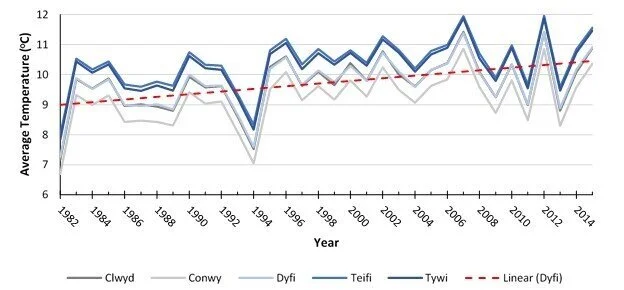By Richard Dallison
Water service providers in the UK face a vast array of challenges when it comes to planning their future operations and services; climate change impacts on the amount of water available for supply to consumers is key among these. In the future we are likely to see longer more accentuated seasons, this is particularly true for winter and summer, which are likely to become more cold and wet, and more hot and dry respectively.
This change in the timing and quantity of surface water available for abstraction by water companies for supply to consumers could lead to water scarcity problems unless steps are taken now to look at the scale and precise nature of these changes and to plan the necessary management to protect against these changes. For example, lower amounts of summer rainfall are likely to be compensated for by larger amounts of precipitation in the winter. However, if reservoirs already fill to capacity in the winter, and no new storage is developed, then this additional winter rainfall cannot be taken advantage of to help with the dryer summers. This is particularly true for Wales, as the vast majority (~97%) of water abstracted for supply to consumers is taken from surface water sources, in particular from upland impoundment reservoirs.
By using hydrological models, such as the Soil and Water Assessment Tool (SWAT), we can look at how projected future climate changes will impact on surface waters. In particular in our work we have taken a worst case scenario approach in terms of future emissions, with representative concentration pathway 8.5 being considered – the IPCC scenario with the highest level of future greenhouse gas emissions. SWAT is a highly detailed hydrological model, which allows investigation of not only the changes in the quantity and timing of water supply, but also the quality of that water. To this end, we can investigate how pollutants such as nitrogen, phosphorous, and suspended sediments will alter under climate change. Alterations in water quality could impact heavily on water companies, as more polluted water may require more rigorous treatment at drinking water treatment plants. These increases in required treatment to maintain drinking water quality standards could have impacts on the operational efficiency of the plants, both financially and in terms of energy use. In certain cases, it may even be required to upgrade plants with new technologies and treatment methods in order to cope with such changes.
Warming trend in average autumn temperatures displayed five catchments in Wales. Linear trend line for the Dyfi catchment shown in red to exemplify the linear trend in all catchments
Furthermore, if we also look at how demand for water is influenced by weather conditions, we can see a strong positive correlation between total water use (domestic, agricultural and industrial) and average daily temperature. When it is considered that future summers are likely to become warmer and dryer, this relationship is likely to put increased pressure on a supply-demand balance that may already be water scarce due to reduced summer rainfall. We can already see the effect of the aforementioned prolonged seasons, with summer temperatures stretching further into the autumn over the past 30 years; the below figure shows the increase in annual autumn temperatures between 1982 and 2015 for the five catchments in Wales. This figure demonstrates the further the need for thorough water resource management planning in order to ensure the continued supply of clean drinking water into the future.


